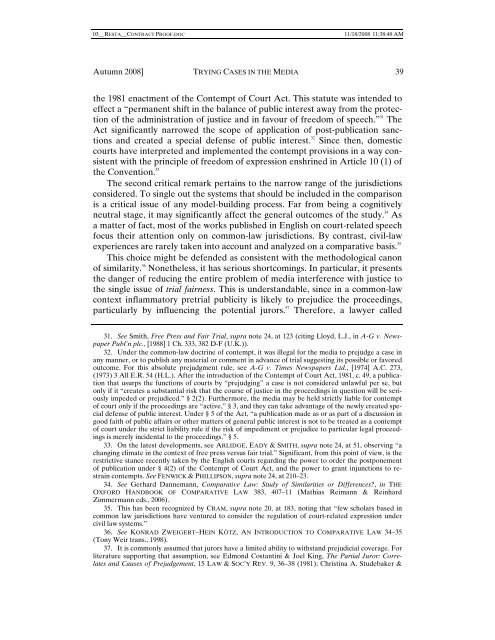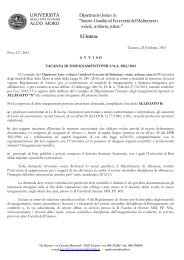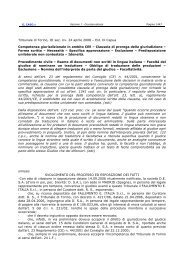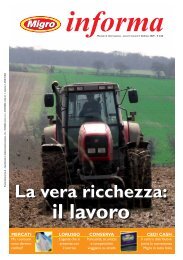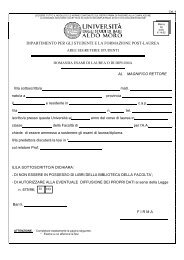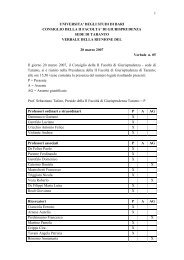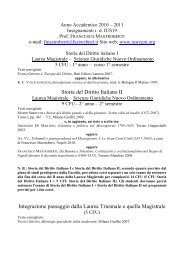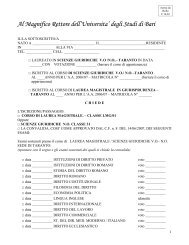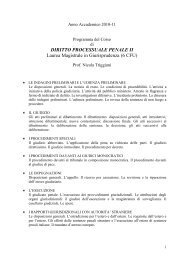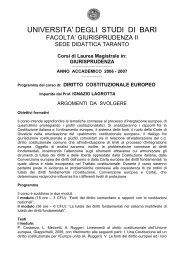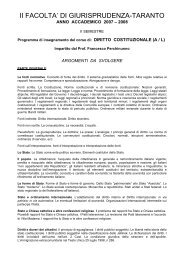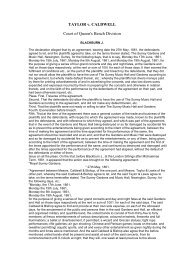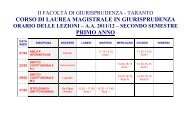TRYING CASES IN THE MEDIA: A COMPARATIVE OVERVIEW
TRYING CASES IN THE MEDIA: A COMPARATIVE OVERVIEW
TRYING CASES IN THE MEDIA: A COMPARATIVE OVERVIEW
You also want an ePaper? Increase the reach of your titles
YUMPU automatically turns print PDFs into web optimized ePapers that Google loves.
03__RESTA__CONTRACT PROOF.DOC11/18/2008 11:38:48 AMAutumn 2008] <strong>TRY<strong>IN</strong>G</strong> <strong>CASES</strong> <strong>IN</strong> <strong>THE</strong> <strong>MEDIA</strong> 39the 1981 enactment of the Contempt of Court Act. This statute was intended toeffect a “permanent shift in the balance of public interest away from the protectionof the administration of justice and in favour of freedom of speech.” 31 TheAct significantly narrowed the scope of application of post-publication sanctionsand created a special defense of public interest. 32Since then, domesticcourts have interpreted and implemented the contempt provisions in a way consistentwith the principle of freedom of expression enshrined in Article 10 (1) ofthe Convention. 33The second critical remark pertains to the narrow range of the jurisdictionsconsidered. To single out the systems that should be included in the comparisonis a critical issue of any model-building process. Far from being a cognitivelyneutral stage, it may significantly affect the general outcomes of the study. 34 Asa matter of fact, most of the works published in English on court-related speechfocus their attention only on common-law jurisdictions. By contrast, civil-lawexperiences are rarely taken into account and analyzed on a comparative basis. 35This choice might be defended as consistent with the methodological canonof similarity. 36 Nonetheless, it has serious shortcomings. In particular, it presentsthe danger of reducing the entire problem of media interference with justice tothe single issue of trial fairness. This is understandable, since in a common-lawcontext inflammatory pretrial publicity is likely to prejudice the proceedings,particularly by influencing the potential jurors. 37Therefore, a lawyer called31. See Smith, Free Press and Fair Trial, supra note 24, at 123 (citing Lloyd, L.J., in A-G v. NewspaperPubl’n plc., [1988] 1 Ch. 333, 382 D-F (U.K.)).32. Under the common-law doctrine of contempt, it was illegal for the media to prejudge a case inany manner, or to publish any material or comment in advance of trial suggesting its possible or favoredoutcome. For this absolute prejudgment rule, see A-G v. Times Newspapers Ltd., [1974] A.C. 273,(1973) 3 All E.R. 54 (H.L.). After the introduction of the Contempt of Court Act, 1981, c. 49, a publicationthat usurps the functions of courts by “prejudging” a case is not considered unlawful per se, butonly if it “creates a substantial risk that the course of justice in the proceedings in question will be seriouslyimpeded or prejudiced.” § 2(2). Furthermore, the media may be held strictly liable for contemptof court only if the proceedings are “active,” § 3, and they can take advantage of the newly created specialdefense of public interest. Under § 5 of the Act, “a publication made as or as part of a discussion ingood faith of public affairs or other matters of general public interest is not to be treated as a contemptof court under the strict liability rule if the risk of impediment or prejudice to particular legal proceedingsis merely incidental to the proceedings.” § 5.33. On the latest developments, see ARLIDGE, EADY & SMITH, supra note 24, at 51, observing “achanging climate in the context of free press versus fair trial.” Significant, from this point of view, is therestrictive stance recently taken by the English courts regarding the power to order the postponementof publication under § 4(2) of the Contempt of Court Act, and the power to grant injunctions to restraincontempts. See FENWICK & PHILLIPSON, supra note 24, at 210–23.34. See Gerhard Dannemann, Comparative Law: Study of Similarities or Differences?, in <strong>THE</strong>OXFORD HANDBOOK OF <strong>COMPARATIVE</strong> LAW 383, 407–11 (Mathias Reimann & ReinhardZimmermann eds., 2006).35. This has been recognized by CRAM, supra note 20, at 183, noting that “few scholars based incommon law jurisdictions have ventured to consider the regulation of court-related expression undercivil law systems.”36. See KONRAD ZWEIGERT–HE<strong>IN</strong> KÖTZ, AN <strong>IN</strong>TRODUCTION TO <strong>COMPARATIVE</strong> LAW 34–35(Tony Weir trans., 1998).37. It is commonly assumed that jurors have a limited ability to withstand prejudicial coverage. Forliterature supporting that assumption, see Edmond Costantini & Joel King, The Partial Juror: Correlatesand Causes of Prejudgement, 15 LAW & SOC’Y REV. 9, 36–38 (1981); Christina A. Studebaker &


